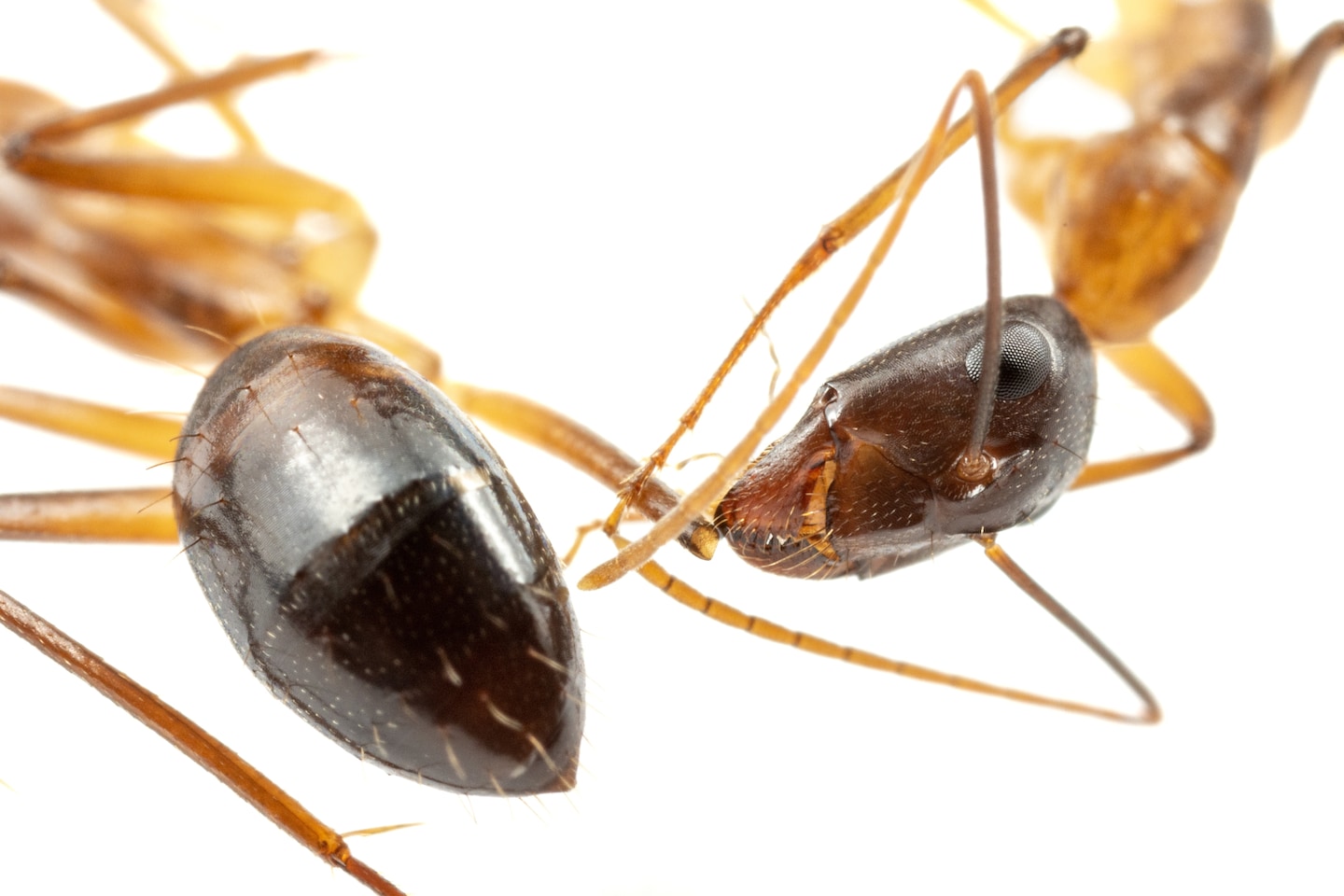“The level of sophistication with which they have evolved to care for their wounded is unparalleled in the animal kingdom. Our human medical system might come closest,” Erik Frank, a behavioral ecologist at the University of Würzburg who led the study, said in an interview Wednesday. “These amputations prevented infections from spreading in the body … in the same way that medieval amputations worked in humans,” he said, adding that the findings are the first recorded example of a nonhuman animal performing an amputation on a fellow animal to save its life.
The study, published Tuesday in the journal Current Biology, suggests that Florida carpenter ants (Camponotus floridanus) can distinguish between different types of wounds and tailor their healing responses accordingly. It adds to our growing understanding of the sophisticated strategies the ants employ to care for each other when they’re injured, including sorting the injured and treating the infected with microbial agents.
The scientists observed the amputations under laboratory conditions as performed by Florida carpenter ants, a reddish, black or brown ant that is typically less than 1/2 inch long. Unlike some other ants, Florida carpenter ants lack the ability to produce antimicrobial secretions from their glands to combat pathogens in wounds. “We wanted to see how a species that lost this gland would still care for its wounded,” Frank said.
The scientists began by deliberately injuring about 100 ants on the leg: either the femur (closer to the body) or the tibia (further down the leg), to compare how other ants in their colony responded. They found that the ants effectively performed amputations when their nestmates suffered injuries to the femur, but never performed amputations when a similar injury was sustained to the tibia.
In the first case, a helping nestmate amputated the entire leg of the injured insect in more than three-quarters of the cases.
The ant’s amputation procedure took about 40 minutes and followed the same pattern each time: “They start by licking the wound with their mouthparts and then move their mouth up the leg until they reach the shoulder. There they start biting pretty hard for several minutes,” Frank said. “The injured ant sits quietly, lets the procedure happen, and doesn’t complain until the leg is severed.”
Of the ants with a thigh injury, 95 percent of the ants that underwent amputation survived, while only 45 percent of the ants that did not undergo amputation survived, Frank said.
“The ants have found a strategy in their world, in their context, that is very efficient and has a very, very high success rate,” Frank concluded.
Laurent Keller, an evolutionary biologist who also worked on the study, said the amputations were done very effectively. “That means they have to do the amputation in a very clean way to prevent bacteria from entering the wound,” he said.
Unlike the treatment given to ants that sustained a thigh injury, ants that sustained a shin injury (further up the leg) were never observed to receive amputations from other nestmates. “In this case, they’re just cleaning the wound,” said Keller, who said the nestmates instead provided an extensive wound-care session with lots of licking.
The wound cleaning method also proved effective. While about 70-75 percent of those who received wound cleaning from other ants survived, only 15 percent of ants with tibia injuries survived when they were isolated from their fellow ants and left unattended, Frank said.
One possible explanation scientists give for the decision when to perform an amputation has to do with the way hemolymph, a fluid similar to blood, flows through invertebrates.
The theory hasn’t been tested yet, but scans show that the tibial region of the leg has a greater hemolymph flow than the femoral region, meaning that pathogens that enter through the tibia spread to the rest of the body more quickly. This in turn significantly reduces the time frame for an amputation to prevent infection from spreading. “If the wound is at the tibia, they don’t do an amputation. This is because the blood – or hemolymph for insects – normally circulates quite quickly. So within 40 minutes, the blood will have carried the bacteria into the ant’s body,” Keller explained.
The ants’ painstaking efforts to tend to each other’s wounds illustrate how social insects benefit from altruistic behavior, Keller said. “By helping each other, they are indirectly helping themselves,” he said.
“Evolutionarily, the colony is saving a huge amount of energy by keeping their injured ones healthy, rather than just throwing them away and replacing them with a new worker,” he said. Previous studies have shown that ants that have lost one or even two legs can still be productive members of their colony, returning to normal walking speed within a day — and they’re often called upon to perform the most dangerous tasks. He added: “Even in ant societies the individual has value.”
